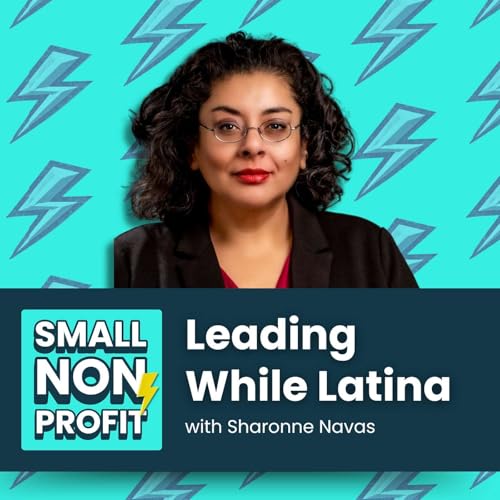Send us a text
From Donor-Centric to Community-Centric: Building Equity Into Fundraising
Most “best practices” put donors and boards at the top of the pyramid - and everyone else (staff, volunteers, service users) at the bottom.
In this episode of The Small Nonprofit Podcast, Maria Rio breaks down the shift from donor-centric to community-centric fundraising and why this change is key to building a more equitable nonprofit sector.
Maria unpacks how covert white supremacy shows up in nonprofit culture, from “tone-policing” to donor hero narratives, and what it looks like to root those habits out in everyday fundraising. She also shares how fundraisers can start bringing donors into these conversations—challenging outdated ideas about overhead, pushing back on problematic donations, and transforming donors into real partners for justice.
Maria shares the mindset, tools, and examples every fundraiser needs to move from good intentions to meaningful action—without burning out or compromising their values.
Community-Centric Fundraising in Nonprofits - The Highlights:
- Why community-centric fundraising is more than a trend; it’s a reimagining of how nonprofits build power and impact.
- The hidden ways white supremacy culture shows up in fundraising practices (and how to spot them).
- How to have respectful but firm conversations with donors about overhead, dignity, and equity.
- Why “no” can be the most ethical and mission-aligned answer to a donation.
- How to turn donors into true advocates and allies for systemic change.
🎧 Listen to more episodes for actionable fundraising tips and insights on nonprofit leadership, nonprofit governance, productivity & tools, and donor engagement strategies that work. We're here to eliminate nonprofit burnout and boost your donations!
Community-Centric Fundraising in Nonprofits – 5 Actionable Tips:
- Audit your fundraising practices — Identify donor-centric habits that center wealth instead of community.
- Educate your donors — Share resources like the Community-Centric Fundraising Hub and invite donors to learn alongside your team.
- Challenge problematic donations — Ask: “Does this gift align with our mission and values?” before saying yes.
- Talk openly about overhead — Frame it as the cost of doing meaningful, sustainable work—not a burden.
- Reframe donor relationships — Position them as collaborators in social change, not saviors.
Resources and Links
- Community-Centric Fundraising Hub
- Vu Le’s Nonprofit AF Blog
- Connect with Maria Rio on LinkedIn
- Support The Small Nonprofit Podcast — we’re fully self-funded! Donate here
- Watch this episode on
Support the show
- Connect with the show: Watch the episode on YouTube; follow Maria Rio on LinkedIn for more conversations and resources. Or support our show. We are fully self-funded!
- Book a Discovery Call with Further Together: Need help with your fundraising? See if our values-aligned fundraisers are a fit for your organization.
 Dec 16 202532 m
Dec 16 202532 m Dec 9 202526 m
Dec 9 202526 m Dec 2 202531 m
Dec 2 202531 m 29 m
29 m 24 m
24 m Nov 11 202531 m
Nov 11 202531 m 19 m
19 m 27 m
27 m
